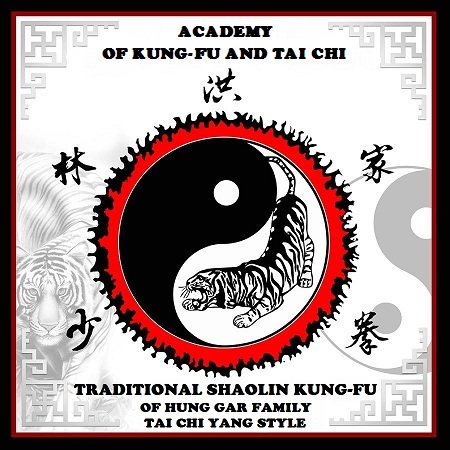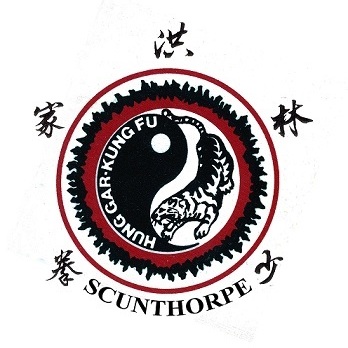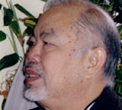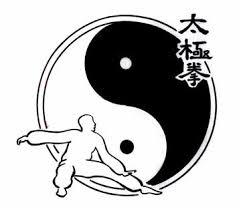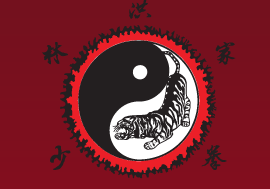
SCUNTHORPE ASSOCIATION
OF KUNG-FU & TAI-CHI
TRADITIONAL SHAOLIN KUNG-FU
OF HUNG GAR FAMILY
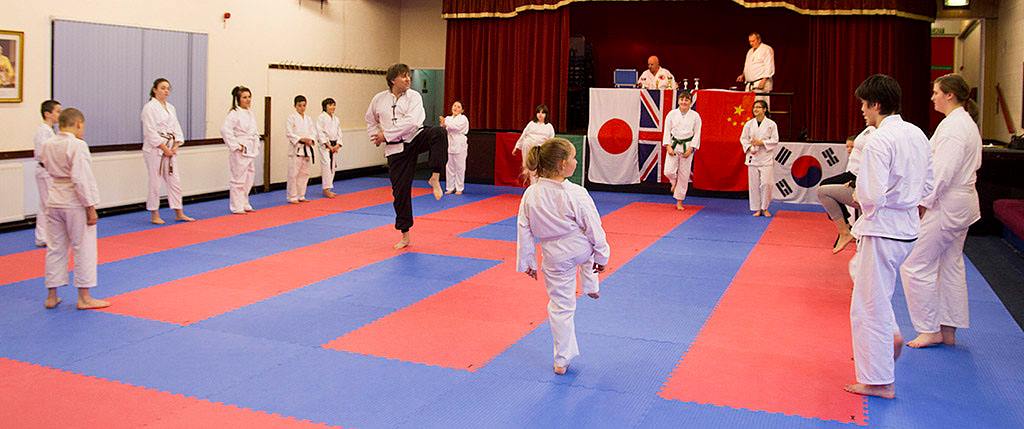

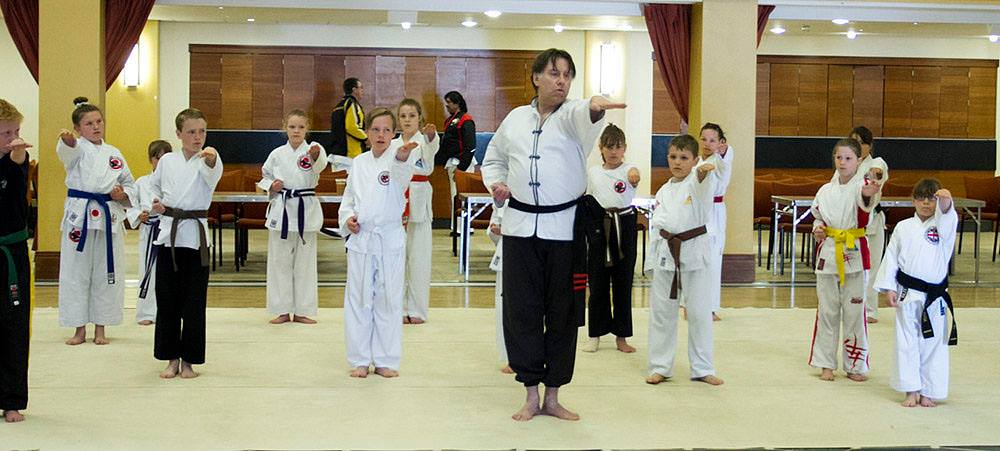
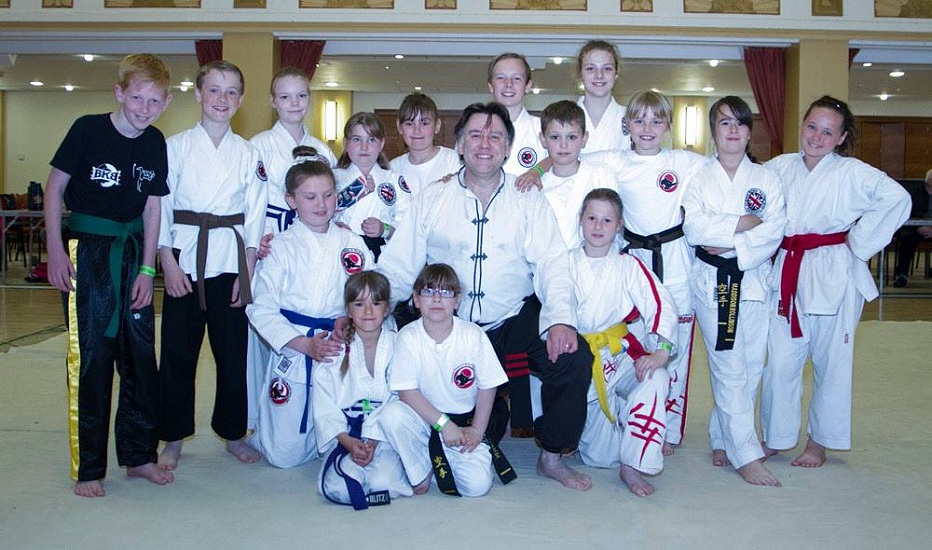
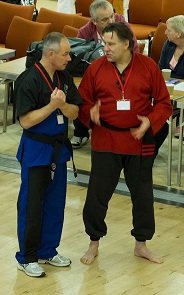
Discover the benefactions of the tai chi !
The tai chi is not only a series of exercises or exclusively a martial art. Mixing both aspects, he harmonizes in a process which allows you to live fully, to keep a physical condition and a
vitality over the average and this whatever is your age.
In a world where everything goes fast, this discipline gives the time to think and to relax mentally, while bringing
benefactions and well-being of a session of training.
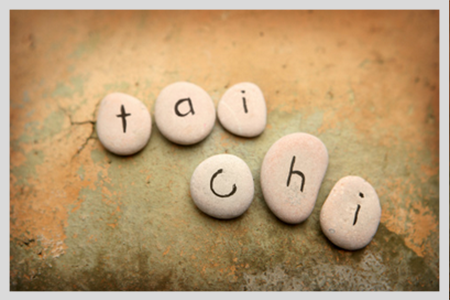
Numerous people suffer from muscle pains bound to prolonged seated stations or to movements made in a inappropriate way in their work. The tai chi learns you above all to be held correctly.
A good position passes at first by an equal distribution of the weight of the body on legs. When you reach there, you can watch to hold your body straight while remaining the most relaxed possible.
You learn then to keep this posture by moving forward or by moving backward.
Then the movements of arms are introduced and you accustom little by little the body and the spirit to keep a straight
posture as well in the immobility as in the movement. By having a practice regularly, this search for the good posture becomes unconscious and you fit little by little your position to the one who
became familiar and comfortable. By improving your posture, you reduce the risks of developing problems of back and relieve the discomfort.
The role of the tai chi on the joints
By aging, our body suffers very often from ankylosis. The joints lose little by little their elasticity, returning any more and more uncomfortable movement. The tai chi requests smoothly the main joints.
Ankles, knees and hips are used to move legs. The bust moves in a circular way, guaranteeing in the vertebral column a twisting or an appropriate rotation. The whole arm is used, from the shoulder to the
wrists via the elbow.
In a contact sport, as the rugby or the soccer, a wound in the joints puts you very often on the sideline and limits largely the practice of the other sports activities. Wounds or physical
incapacities do not hamper at all the practice of the tai chi. With a little of effort, you can learn to fully use every available movement, to strengthen its joints as time goes by and be little by little
capable of deepening the movement. By ignorance, people neglect or are afraid of maintaining their physical condition having been hurt.
The tai chi movements, close to the soft gymnastics,
limit the risk of wound. Far from weakening the joints, they help strengthen them. The risk of developing problems in the joints, like arthritis or rheumatisms, is reduced and those who suffer from it
are generally largely relieved thanks to the tai chi.
The role of the tai chi on the muscles
If the joints allow the members to move, it is the muscles which command and give strength and power to the movement. The sports activity is governed by the way you condition(trained) your muscles.
The forms of training are multiple. Where a bad conditioning can damage muscular tissues in the point to cause a wound preventing the practice of a particular activity.
Muscular injuries are often due in one bad position, an exaggerated stretching or a too strong pressure on a still cold muscle. The tai chi helps prevent this type of muscular injuries.
Muscular injuries due to a bad position disappear as soon as we correct its posture. An exaggerated stretching destabilizes and weakens the posture. By respecting a good position, the risks of strain disappear.
The slow nature of the tai chi allows the muscles to warm up smoothly. Even if you neglect the exercises of warm-ups, the risk of muscular injury is reduced. (Attention however, it is not totally
excluded. Whatever is the ease of the exercise, it is essential to warm up always beforehand.)
By aging, the risk of muscular injury increases proportionally with the intensity of the activity.
A regular practice tends to strengthen and to tone up muscles. The open and slow movements of the tai chi allow the muscles to stretch and to preserve their flexibility. The relaxed and regular look of the pratice
reduces the risk of wound. It allows to have a practice even late in life, without big risk. The tai chi does not favor a muscular group rather than an other one. Legs work doubtless more that the bust because
they have to support the weight of the body comfortably but a regular practice develops naturally the body.
A found back well-being
The practice of the tai chi learns you to develop and to use the method of breathing said abdominal breathing. The lung capacity is completely used and the lungs take a maximal volume of air in every inspiration.
It guarantees a bigger contribution of oxygen in the body. Lungs contain millions of small vessels called capillary by which all the blood of the body crosses every minute. It is necessary to know that the
brain uses 20% of the oxygen which you inhale and approximately 15% of the blood. The blood is filtered by the loins that it crosses more or less every 4 minutes. The internal organs of the body benefit greatly
from this additional contribution in oxygen.
The tai chi is beneficial to the whole body, external and internal because it favors the physical, emotional and mental well-being. It tones up, strengthens
and increases the flexibility of muscles and joints. As it is soft, those last are not excessively requested.
The tai chi allows the cardiovascular system to develop gradually, smoothly and without big risk.
It improves the balance and the coordination and is not conditioned by constraints of ages or weight. The risk of wound is small and it is even possible to pursue the exercises while recovering from a physical wound.
He can be practised with no problem at all throughout the pregnancy and the pregnant women who practise the tai chi often state absence of pre- and postnatal problems.
The tai chi maybe practised more
than once a day without risk of overwork and requires initially only a little of space. The classes allow you generally to acquire a sufficient control to be able practicing alone as fast as possible.
Afterward, you can train with a partner or in a group. As your capacity to practise the tai chi and as your condition improve, your posture cures and you begin to breathe more effectively. It causes in you a
feeling of greater well-being, what increases your confidence and your vitality. This feeling echoes on your existence and influences in a positive way the quality of life of those who surround you.
That's why this discipline is beneficial to the whole body, health and well-being are among the long-term benefactions of the tai chi, favoring the self-fulfillment and the positive thought.
In conclusion practised regularly, the tai chi has real benefactions on the health.
At the psychological level first of all, as any techniques of relaxation, the tai chi can improve the problems of sleep, the states of nervousness. In this respect, the practice of the tai chi is a real answer to the current problems, in particular the city-dwellers, worth knowing the settled way of life and the accumulation of stress.
More than a physical discipline limiting itself to movements, tai chi is indeed a lifestyle, where body and spirit make only one. This alliance of relaxation techniques and physical exercises indeed aims at the internal harmony but also towards the others.
As for the physical benefactions strictly speaking, they are many.
On the osteoarticular plan first of all, we win in flexibility thanks to the progressive stretchings of tendons; the slow movements
of big amplitude are beneficial in the joints. Realized according to the rule book, the tai chi can so bring comfort to the sufferings lumbar vertebra. He also allows to improve the cardiac and lung capacities.
By the game of the body weight transfer of a foot on the other one, the tai chi improves besides the sense of the balance. In a general way, the tai chi helps to integrate better its body image and to coordinate its movements. In the tai chi, we learn actually to maintain the centered and aligned body while being in movement.
Finally, the practice of the tai chi is an excellent exercise for the memory and the concentration; to memorize the movements, the sequences of movements, to make them without tear indeed asks a real effort of attention. The practice of the tai chi turns out so particularly interesting at the elderly. In 2001, the Bretonneau day hospital of Paris moreover tried this experiment: propose courses of tai chi - Completes discipline making work the body and the attention - to the patients affected by Alzheimer. Since then, this initiative was taken back in numerous French hospitals.
